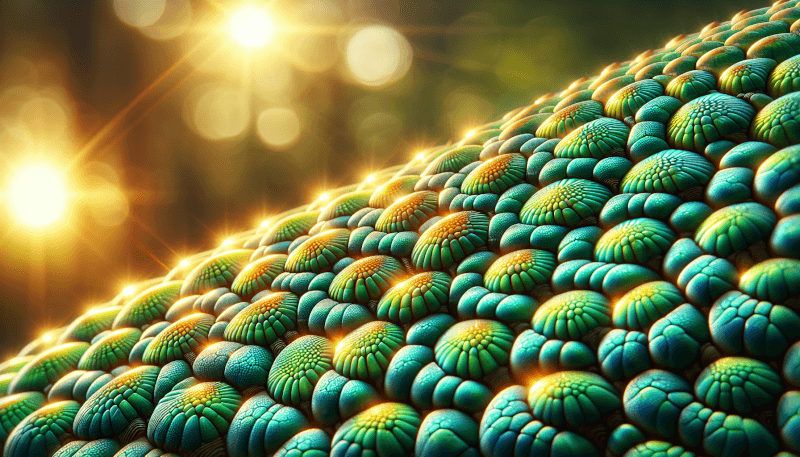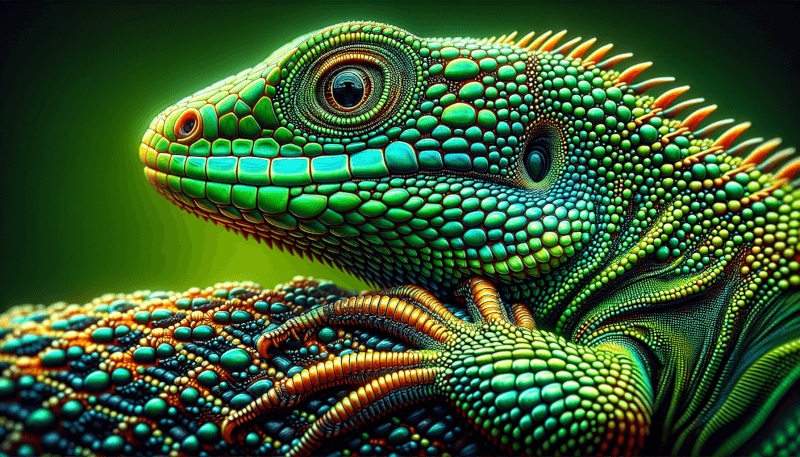Reptiles are fascinating creatures with unique dietary needs and digestive systems. Understanding the intricacies of reptile digestive health is crucial for ensuring their overall well-being. From the types of food they consume to the importance of maintaining proper hydration levels, this article will provide you with valuable insights into the world of reptile digestion. Whether you’re a reptile enthusiast or a pet owner, these essential tips will help you navigate the vast landscape of reptile digestive health.

Types of Reptiles
Reptiles are an incredibly diverse group of animals, and they can be found in various habitats all around the world. There are four main groups of reptiles: lizards, snakes, turtles and tortoises, and crocodilians. Each group has unique characteristics and adaptations that allow them to survive in their respective environments.
Lizards
Lizards are a widespread and diverse group of reptiles that can be found in almost every corner of the world. They have scaly skin, a long tail, and usually four legs. Lizards come in a variety of sizes, ranging from tiny geckos to large monitor lizards. They have a wide range of diets, with some species being herbivorous, while others are carnivorous.
Snakes
Snakes are limbless reptiles that are known for their elongated bodies and unique method of locomotion. They can be found in diverse habitats, from deserts to rainforests. Snakes have a specialized jaw that allows them to swallow their prey whole, and they have a highly efficient digestive system that enables them to process and extract nutrients from their food.
Turtles and Tortoises
Turtles and tortoises are reptiles that are characterized by their protective shells. Turtles are aquatic or semi-aquatic, while tortoises are primarily terrestrial. Both turtles and tortoises have a highly specialized digestive system that allows them to break down tough plant material and absorb nutrients efficiently.
Crocodilians
Crocodilians are a group of large, predatory reptiles that includes crocodiles, alligators, and caimans. They have a powerful bite and a digestive system that is capable of digesting large prey. Crocodilians are mostly carnivorous and have a unique tooth structure that facilitates the capture and consumption of their prey.
Reptile Digestive System Overview
In order to understand the digestive process in reptiles, it is essential to have a basic understanding of the different components of their digestive system. The reptile digestive system can be divided into several key parts: mouth and teeth, esophagus, stomach, intestines, and cloaca.
Mouth and Teeth
The mouth of a reptile serves multiple purposes, including capturing and manipulating food. Unlike mammals, reptiles do not have teeth that continuously grow, so their teeth must be strong and sharp to effectively tear and shred their food. The shape and structure of the teeth can vary depending on the reptile’s diet.
Esophagus
The esophagus is a muscular tube that connects the mouth to the stomach. Its main function is to transport the ingested food from the mouth down to the stomach. In some reptiles, the esophagus can expand to accommodate larger prey items.
Stomach
The stomach of a reptile is responsible for the physical and chemical breakdown of food. It secretes gastric juices that help break down the ingested food into smaller particles. The stomach also plays a crucial role in the absorption of certain nutrients.
Intestines
The intestines are the longest part of the reptile digestive system and are responsible for the final stages of digestion and nutrient absorption. The small intestine is where the majority of nutrient absorption takes place, while the large intestine is primarily involved in water reabsorption and waste formation.
Cloaca
The cloaca is the common opening for the urinary, reproductive, and digestive systems in reptiles. It serves as the exit point for waste materials and urine. The waste materials are formed into solid feces, which are then eliminated from the reptile’s body.

Reptile Digestive Process
The digestive process in reptiles can be broken down into several stages, each of which plays a crucial role in extracting nutrients from the food they consume.
Ingestion
The first stage of the digestive process is ingestion, where the reptile captures and swallows its food. The reptile’s feeding behavior and method of ingestion can vary depending on its species and diet. Some reptiles actively hunt and capture their prey, while others may rely on scavenging or foraging for food.
Mechanical Digestion
Once the food is ingested, mechanical digestion occurs. This process involves the physical breakdown of food into smaller particles through chewing or muscle contractions in the digestive system. Reptiles with teeth, such as lizards, are able to mechanically break down their food through chewing, while snakes rely on strong muscular contractions to break down their prey.
Chemical Digestion
Chemical digestion occurs in the stomach, where enzymes and acids break down the ingested food into smaller molecules. The gastric juices secreted by the stomach help to further break down proteins, fats, and carbohydrates, allowing for easier absorption.
Absorption
After the food is broken down into smaller molecules, the nutrients are then absorbed in the small intestine. The inner lining of the small intestine is covered in tiny finger-like projections called villi, which increase the surface area available for nutrient absorption. The absorbed nutrients are then transported to the bloodstream, where they can be distributed to various organs and tissues in the reptile’s body.
Elimination
Once the nutrients have been absorbed, the waste products that are not needed by the reptile’s body are formed into solid feces in the large intestine. The feces are then eliminated from the body through the cloaca.
Diet and Nutrition
Reptiles have diverse dietary requirements, and their nutritional needs vary depending on their species and feeding habits. Understanding the specific dietary needs of your reptile is essential for maintaining its overall health and well-being. Here are the three main categories of reptile diets:
Carnivorous Reptiles
Carnivorous reptiles primarily feed on other animals, including insects, birds, mammals, and other reptiles. They have sharp teeth and strong jaws that allow them to capture and consume their prey. It is important to ensure that carnivorous reptiles receive a variety of prey items to ensure a balanced diet.
Herbivorous Reptiles
Herbivorous reptiles primarily feed on plant material, including leaves, fruits, and flowers. They have specialized teeth and jaws that are adapted for grinding and mashing plant material. Herbivorous reptiles often require a diet rich in fiber and calcium to meet their nutritional needs.
Omnivorous Reptiles
Omnivorous reptiles have a flexible diet that includes both animal and plant material. They have a wide range of feeding habits and can consume a variety of prey items as well as plant material. Omnivorous reptiles require a balanced diet that includes a mix of protein-rich animal food and plant material.
Feeding Frequency and Portions
The feeding frequency and portion size for reptiles can vary depending on their species, age, and metabolic rate. It is important to research and understand the specific feeding requirements of your reptile to ensure that it receives the appropriate amount of food. Overfeeding can lead to obesity and other health issues, while underfeeding can result in malnutrition.

Common Digestive Issues in Reptiles
Just like any other animal, reptiles are susceptible to various digestive issues that can affect their overall health and well-being. Here are some of the most common digestive issues in reptiles:
Impaction
Impaction occurs when a reptile is unable to excrete its waste properly, resulting in a blockage in the digestive tract. This can be caused by ingesting foreign objects, such as substrate or indigestible materials. Impaction can lead to serious health issues if not addressed promptly.
Regurgitation
Regurgitation is the forceful expulsion of stomach contents through the mouth. It can be caused by a variety of factors, including stress, improper handling, or an underlying digestive problem. Persistent regurgitation can lead to dehydration and malnutrition if not addressed.
Dehydration
Dehydration can occur when a reptile does not receive enough water or is unable to retain water properly. It can be caused by environmental factors, such as low humidity or inadequate access to water sources. Dehydration can lead to digestive issues, organ dysfunction, and other health complications.
Malnutrition
Malnutrition refers to a deficiency or imbalance of essential nutrients in a reptile’s diet. It can occur when a reptile is not provided with a balanced diet that meets its specific nutritional needs. Malnutrition can lead to weakened immune function, stunted growth, and a variety of health issues.
Signs of Digestive Problems
It is important for reptile owners to be vigilant and observant of any signs or symptoms that may indicate digestive problems in their pets. Early detection and intervention can be crucial in ensuring the health and well-being of your reptile. Here are some common signs of digestive problems in reptiles:
Loss of Appetite
A sudden or prolonged loss of appetite can be an indication that something is wrong with your reptile’s digestive system. It is important to monitor your reptile’s feeding habits and seek veterinary attention if it stops eating.
Weight Loss
Unexplained weight loss in a reptile can be a sign of an underlying health issue, including digestive problems. Regularly weigh your reptile to monitor its weight and seek veterinary advice if you notice any significant changes.
Vomiting
Vomiting or regurgitation of food is a clear sign that something is amiss in your reptile’s digestive system. It is important to identify the underlying cause of the vomiting and seek appropriate veterinary care.
Abnormal Stool
Changes in the appearance, color, consistency, or frequency of your reptile’s stool can indicate digestive issues. Diarrhea, constipation, or the presence of blood in the stool should be monitored closely and addressed by a veterinarian if necessary.
Preventing Digestive Issues
Preventing digestive issues in reptiles requires a proactive approach to their care and well-being. Here are some tips to help prevent digestive problems in your reptile:
Proper Enclosure Setup
Ensuring that your reptile’s enclosure is set up correctly is vital for its overall health. Providing appropriate temperature gradients, humidity levels, and substrate can help promote a healthy digestive system.
Temperature and Humidity
Reptiles are ectothermic and rely on external sources, such as heat and humidity, to regulate their body temperature and bodily functions. Maintaining the proper temperature and humidity levels in their enclosure is essential for their digestive health.
Balanced Diet
Providing a balanced diet that meets the specific nutritional needs of your reptile is crucial for preventing digestive issues. Consult with a veterinarian or reptile specialist to determine the appropriate diet for your pet.
Supplements
Depending on your reptile’s specific dietary needs, supplements may be necessary to ensure they receive all the necessary vitamins and minerals. Vitamin and mineral deficiencies can lead to digestive problems and other health issues.
Hydration
Maintaining proper hydration is vital for a reptile’s overall health and digestive function. Ensure that your reptile has access to clean, fresh water at all times, and consider misting or offering a bathing area for species that require higher humidity levels.
Feeding Techniques for Reptiles
Feeding reptiles can be a delicate process, especially for reptiles with specialized dietary needs or those that may be unwell. Here are some feeding techniques that can be used for reptiles:
Hand Feeding
Hand feeding involves offering food directly to your reptile using feeding tongs or your hand. This technique can be useful for reptiles that are reluctant to eat or those that require close monitoring of their food intake.
Tong Feeding
Tong feeding involves using feeding tongs to present food to your reptile. This technique allows for precise and controlled feeding, especially for reptiles with delicate or sensitive mouths.
Tube Feeding
Tube feeding is a method that involves passing a small tube directly into the reptile’s esophagus and delivering a specialized liquid diet. This technique is typically used for reptiles that are unable to eat on their own or are recovering from illness.
Force-Feeding
Force-feeding should only be considered as a last resort and should be performed under the guidance of a veterinarian. This technique involves manually opening the reptile’s mouth and introducing food directly into the esophagus.
Professional Veterinary Care
Regular veterinary care is essential for maintaining the health and well-being of your reptile. Here are some considerations regarding professional veterinary care for reptiles:
Choosing an Exotic Animal Veterinarian
When selecting a veterinarian for your reptile, it is important to choose one who is experienced and knowledgeable in exotic animal care. Not all veterinarians have training or experience in treating reptiles, so it is crucial to find a qualified professional.
Routine Check-ups
Regular veterinary check-ups are important for monitoring your reptile’s overall health and detecting any potential digestive issues early on. Your veterinarian can perform physical examinations, review dietary recommendations, and provide guidance on optimal care.
Diagnostic Tests
If your reptile is exhibiting signs of digestive problems, your veterinarian may recommend certain diagnostic tests to determine the underlying cause. These tests may include blood work, fecal examinations, radiographs, or ultrasound.
Treatment Options
Treatment options for digestive issues in reptiles will vary depending on the specific condition and severity. Your veterinarian may recommend dietary changes, medications, fluid therapy, or other interventions to address the problem.
Conclusion
Maintaining good digestive health is crucial for the overall well-being and longevity of reptiles. By understanding the different types of reptiles, the components of their digestive systems, and the various stages of the digestive process, you can provide optimal care for your reptile. From proper enclosure setup to balanced diets and regular veterinary care, implementing preventive measures and promptly addressing any signs of digestive problems can help ensure that your reptile enjoys a healthy and happy life. Remember to consult with your veterinarian for specific guidance tailored to your reptile’s individual needs.


